- Bernard Preston homepage
- Gluten
- Wheat Gluten Intolerance and Whole Grains
Wheat gluten intolerance and whole grains
Wheat gluten intolerance and whole grains are inexorably tied up with the fact that fibre slows gastric emptying; that means all the bran. Surprisingly artisan bread is not in the slightest bit heavy; but it does take more chewing.
Because it is a true whole grain, one slice is generally enough; more and you will feel bloated. We have become accustomed to eating too much bread; because commercial loaves bring little satiety. Chronic over-consumption of starch leads to raised blood glucose, obesity and ultimately the threat of diabetes.
Quick guide
The normal physiology
Whilst physiology is a highly complex subject it can be broken down into basic concepts that are not so difficult to understand. Knowledge is power; grasp this and you will be able to deal with your gluten intolerance.
Food is made up of three macronutrients; protein, carbohydrate and fat.
All are important but today we are looking only at protein; and more specifically that called gluten which is found in wheat, barley and rye.
Less than 1% of people enjoying a typical Western diet suffer from a condition known as Coeliac Disease; a severe autoimmune response to these grains. Yet one-third of Americans are trying to avoid this important foodstuff; why is that?
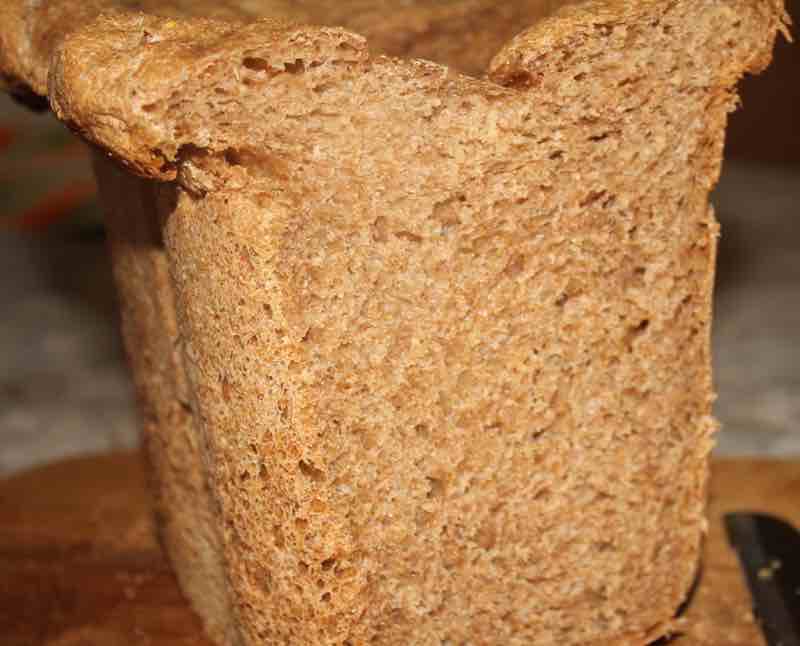 Long ferment sourdough bread; as you can see it's not heavy.
Long ferment sourdough bread; as you can see it's not heavy.The mouth is where it all starts
The metabolism of all protein, fat and carbohydrate begins in the mouth with thorough chewing. This can not be overemphasized; the breaking down of our food into smaller pieces and complete mixing with the digestive enzymes in saliva should start before it even enters the stomach.
If you are suffering from bloating, indigestion or diarrhoea then the first step is to take more time over your meals and chew everything thoroughly; it's the only way to achieve proper mixing with the saliva. Eat more slowly and consider mindfully the taste and texture of your food.
Oddly that also means not simply swallowing soup and porridge, for example. They too need to be mixed thoroughly with saliva to start the proper digestion of our food.
There is considerable merit in "fletcherising;" chewing every mouthful 32 times.
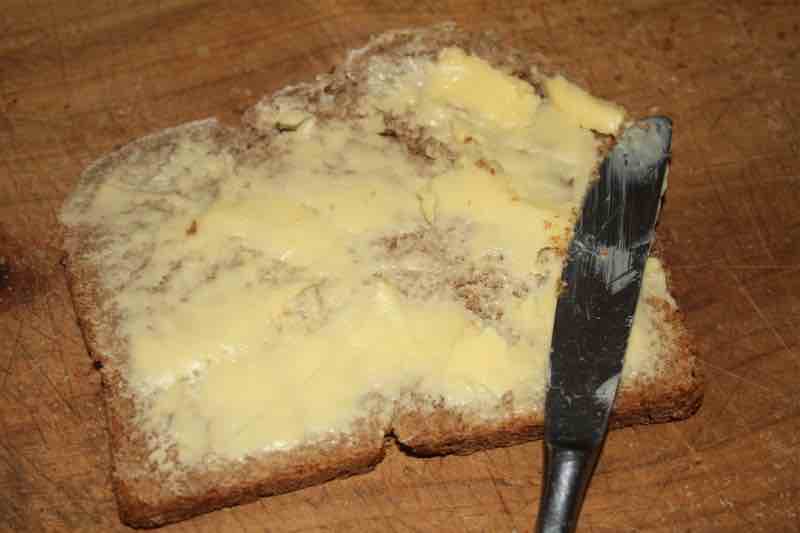 100 percent real bread and butter
100 percent real bread and butterPepsin and acid are added in the stomach
The most important stage of gluten digestion then continues in the stomach. Cells in the wall produce an enzyme called pepsin that starts the process of breaking down proteins. This can only happen at a very low pH so a large amount of concentrated hydrochloric acid must be secreted into the mixture.
Antacids will disturb this digestion of gluten by raising the pH; pepsin cannot then function properly. An upset, unhappy stomach is inevitable.
Medically it's called dyspepsia. Notice the correlation with the name of the enzyme that digests protein in the stomach.
On a personal note, an anecdote it's true and not to be construed as hard evidence, my severe nightly dyspepsia was not caused by too low a pH but a helicobacter infection. Neither Rennie, antibiotics nor proton pump inhibitors helped a jot.
But a probiotic fermented in our own kitchen[3] overwhelmed the pathogens and solved 90% of the pain of fifteen years in just two weeks.
"Let thy food be thy medicine, and medicine be thy food."
Hippocrates (460 - 370 BC)
Proteins consist of long strings of building blocks known as amino acids; there are 20 of them. Each contains a nitrogen atom and a COOH group; and a long variable side-chain.
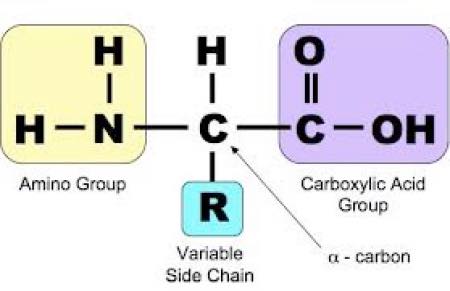
Gluten contains large amounts of one of the amino acids called proline; it has a completely different ring structure to all the other 19.
It takes pepsin much longer to digest a chain of amino acids that contains large amounts of proline; grains need to stay in the stomach for a longer period. This is why the fibre in the bran is so important.
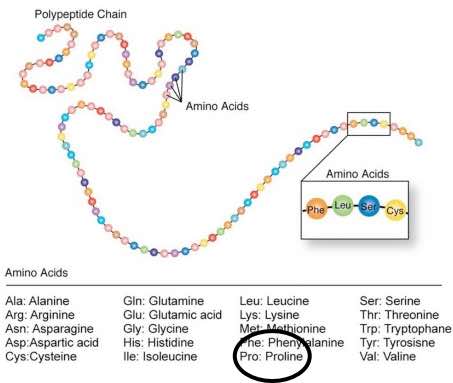 Proline is gluten's spoke in the wheel
Proline is gluten's spoke in the wheelGastric emptying is controlled by one of the "incretin" hormones known as GLP-1; it is normally secreted by cells in the small and large intestines. It is being used by modern weight-loss drugs to ensure that food stays in the stomach for longer; but reduces the normal output of the substance from our own guts so you have to stay on them for life. You become addicted.
Fibre delays gastric emptying
Fibre from our food also delays gastric emptying improving the digestion of gluten before it enters the small intestine where absorption occurs. However only 5% of those enjoying typical grocery store meals are getting the recommended dietary allowance.
Food leaves the stomach faster, poor digestion of gluten is likely and GLP-1 signals to the appetite centre of the brain are lessened; so we continue to feel hungry for longer and eat more bread than is necessary. One slice should usually be enough; perhaps an extra half.
Absorption happens in the small intestine
More enzymes are added when our food enters the small intestine . Should these short chains of partially-digested gluten not be completely broken down into individual amino acids then they will be absorbed by cells in the villi; where they will be recognised by our immune system as foreign proteins, setting up an inflammatory attack on them.
Bloating, abdominal discomfort and diarrhoea are likely; this is gluten intolerance and in its severe form, Coeliac Disease. There is damage to the lining of the gut which becomes angry and inflamed; pieces slough off in the stool.
For the less than 1% who have the autoimmune Coeliac disease it means complete abstinence from all wheat, barley and rye; with one important exception. Most can enjoy carefully produced sourdough bread.
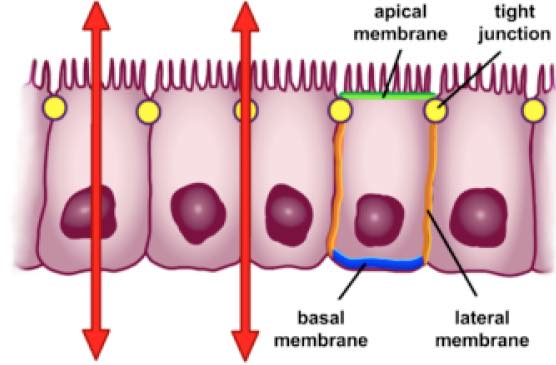
The pancreas produces enzymes like trypsin that continue this process of digestion of the short-chain protein fragments into single amino acid units ready for absorption.
Many factors can affect this process; chemical food additives, fat and the normal flora for example. There is much research and anecdotal evidence that a widely diverse microbiome contributes greatly to the happy tum; less bloating and stabilisation of the transit time.
Gluten-sensitivity on the other hand is a somewhat nebulous diagnosis, probably real but poorly understood; and without any of the inflammatory changes of the gut lining.
Commercial bread and the Chorleywood Process
Most commercial bread is baked using the Chorleywood process which takes about an hour and a half; plus two more to cool before packaging. Larger amounts of yeast and various chemicals are added; typically ascorbic acid, emulsifiers and enzymes such as transglutaminase.
That is about half the time compared with traditional baking methods; and a fraction of that when using sourdough.
Gluten sensitivity remains a controversial and poorly understood condition; but these chemicals and the short production time have been fingered for many of the symptoms which may have been erroneously attributed to the amino acids in bread.
- Do these symptoms appear when enjoying a sourdough bread cooked using the longer fermentation time and without any of the above mentioned chemicals?
- Do the symptoms disappear on a gluten-free diet?
- Do they reappear when eating commercial bread?
The point being that gluten may be the falsely-accused cause of your symptoms.
The fibre is digested in the colon
Friendly bacteria, viruses and yeast cells making up the microbiome rapidly ferment the remaining fibre when it reaches the colon; they release short chain fatty acids that supply energy to the cells of the intestinal wall and normalise the inflammatory response in the whole body.
Wheat gluten intolerance and whole grains are intimately connected; without the fibre one cannot have a normal microbiome, nor satisfactory motility of the gut.
Unobtainable whole grains
Whole grains have become increasingly difficult to find. It's virtually impossible to purchase 100% flour or cornmeal, for example. They have a shelf-life of only about one week and are rarely stocked in grocery stores; the fats start to go rancid once the kernel is cracked.
The subject is muddied by the Big Fat Lie; millers are allowed to label their grains as "wholemeal" provided they do not extract more than 40% of the fibre and germ. They do take longer to chew. Wheat gluten intolerance increases in leaps and bounds with processing.
Essential amino acids
There are 20 amino acids; 9 of them are "essential." We cannot enjoy healthy lives unless we consume them daily from our food.
The gluten in wheat is not complete. So bread is usually consumed with another protein; peanut butter, cheese or egg for example.
"In 1838 Dutch chemist Gerardus Mulder proposed the existence of a compound he called protein which he argued played a principal role in nourishment."
- National Geographic
Gluten is an incredibly important protein; avoiding it needlessly makes no sense.
Cinnamon, ginger and turmeric
Certain spices have long been used in herbal medicine to aid in blood glucose metabolism, to influence the pancreas and the digestion of our food. They are far more effective however when used regularly with our cooking rather than as a treatment for disease once established.
The science around whole grains, gluten and diabetes is incredibly intertwined. But at a practical level it is not difficult to pop a stick of cinnamon into our soups[4], make ginger teas[5] and even a turmeric tonic with honey[6] to lessen our dyspepsia and improve our digestion; and our life span.
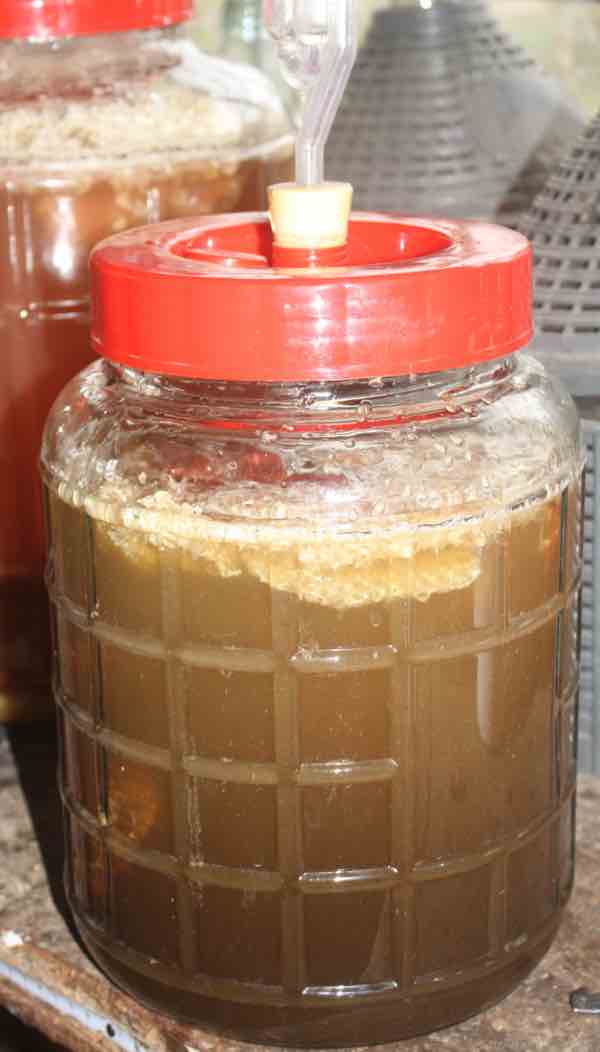 A turmeric and honey tonic
A turmeric and honey tonicWheat gluten intolerance and whole grains
Wheat gluten intolerance and whole grains are intimately connected. The bran in 100% real bread keeps food in the stomach for an extended period; exposing the proteins to digestive enzymes for longer, reducing the likelihood of short chains of amino acids being absorbed into the blood stream and causing dyspepsia.
When browsing use right click and "Open Link in New Tab" or you may get a bad gateway signal.
Newsletter
Our newsletter is entitled "create a cyan zone" at your home, preserving both yourself and Mother Earth for future generations; and the family too, of course. We promise not to spam you with daily emails promoting various products. You may get an occasional nudge to buy one of my books.
Here are the back issues.
- Lifestyle and ideal body weight
- What are ultra-processed foods?
- Investing in long-term health
- Diseases from plastic exposure
- Intensive lifestyle management for obesity has limited value
- A world largely devoid of Parkinson's Disease
- The impact of friendly bacteria in the tum on the prevention of cancer
- There's a hole in the bucket
- Everyone is talking about weight loss drugs
- Pull the sweet tooth
- If you suffer from heartburn plant a susu
- Refined maize meal and stunting
- Should agriculture and industry get priority for water and electricity?
- Nature is calling
- Mill your own flour
- Bake your own sourdough bread
- Microplastics from our water
- Alternative types of water storage
- Wear your clothes out
- Comfort foods
- Create a bee-friendly environment
- Go to bed slightly hungry
- Keep bees
- Blue zone folk are religious
- Reduce plastic waste
- Family is important
- What can go in compost?
- Grow broad beans for longevity
- Harvest and store sunshine
- Blue zone exercise
- Harvest and store your rainwater
- Create a cyan zone at your home
Did you find this page interesting? How about forwarding it to a friendly book or food junkie? Better still, a social media tick would help.
- Bernard Preston homepage
- Gluten
- Wheat Gluten Intolerance and Whole Grains
Address:
56 Groenekloof Rd,
Hilton, KZN
South Africa
Website:
https://www.bernard-preston.com